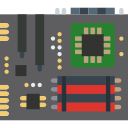Apple M1 Chip vs. Intel x86 Processors: What is the Difference?
June 22nd, 2020 marked a very significant milestone for Apple with the announcement of a brand new line of custom desktop and mobile CPUs branded as “Apple Silicon”. Up until that point and even at the time of writing, Apple has been partnered with Intel for the provision of CPUs for its laptop and desktop products like the MacBook Pro and the Mac Pro. With the announcement of this new lineup of custom silicon, Apple is planning to transition away from the CPUs provided by Intel in favor of processors that it aims to develop and manufacture independently.

Apple has already been developing and manufacturing its own custom microprocessors for its iPhones with tremendous success, and it is no surprise that it now wants to amplify that acclaim by targeting the mobile and desktop CPU market. This move is further justified by Intel’s complete lack of innovation and progress lately not only in its desktop CPU lineups but also in the laptop CPU market where parameters like efficiency reign supreme. Intel has had well-documented issues with its targeted move to the 10nm manufacturing process, so they are still stuck at 14nm for most of their products for now. This makes the transition from Intel to Apple’s own Silicon all the more important for a company with a reputation like Apple’s.
Apple Silicon
We have already covered the basics of Apple Silicon and what it means for Intel in this article, but in today’s content piece we have a host of new information about Apple Silicon including the first product that Apple has officially produced under the Apple Silicon branding. Apple Silicon is basically meant to be a lineup of processors that Apple has full control over, be it in design, manufacturing, production, performance, optimization, or what have you. Apple aims to exponentially improve the user experience and performance of its laptop and desktop products with this lineup of CPUs as those products have somewhat stagnated due to the lack of significant performance gains from Intel’s side.
Apple Silicon is also taking a completely different approach to the manufacturing of the processors themselves as compared to Intel. Unlike Intel’s processors which are based on the x86 architecture, Apple is basing its custom CPUs on the ARM architecture, which comes with its own host of benefits and disadvantages as explored later in the article. Combining the ARM architecture with Apple’s 5nm manufacturing process, Apple aims to produce custom microprocessors that outrank Intel’s offerings not only in performance but also in efficiency which is a major concern for laptop products such as the MacBook series.
Apple M1 Chip
Apple’s first product under the Apple Silicon branding came on November 10th, 2020 named Apple M1. This is a custom chip that has been developed by Apple based on the ARM architecture and manufactured on the 5nm process node. Apple M1 promises industry-leading performance, powerful features, and incredible efficiency to the users of laptops and desktops that harness the power of this chip. As a system on a chip (SoC), the M1 combines a number of powerful technologies into a single chip in a really interesting and innovative design that has not yet been seen before from either Intel or AMD. Not to mention, M1 is the first personal computer chip built using the 5-nm process node.
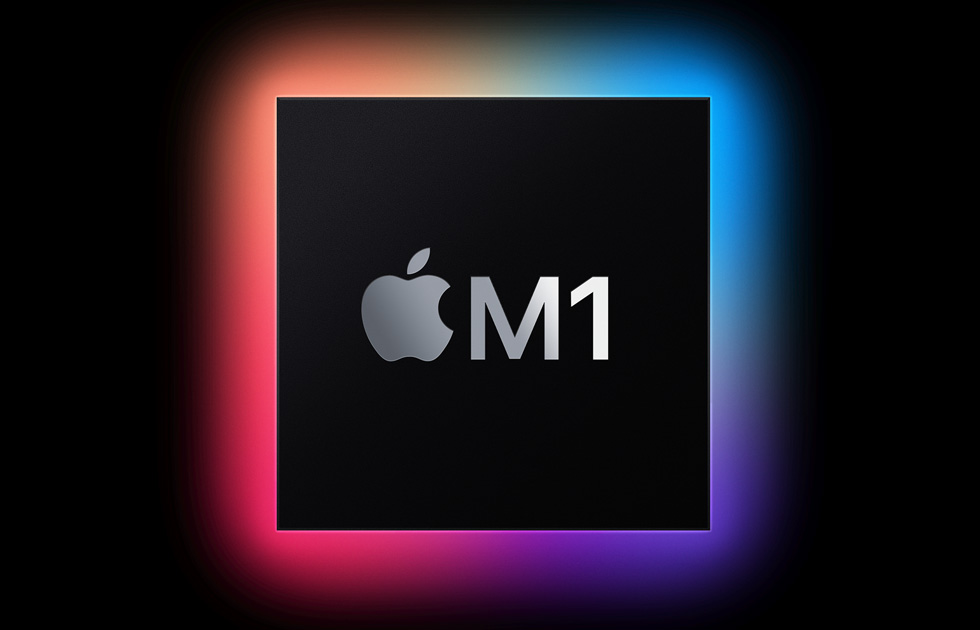
Apple has made a host of bold claims regarding the projected performance and efficiency of the Apple M1 chip. According to Apple, The M1 features the world’s fastest CPU core in low-power silicon, the world’s best performance per watt, the world’s fastest integrated graphics in a personal computer, breakthrough machine learning performance with the Apple Neural Engine. Apple claims that the M1 delivers the biggest leap ever for the Mac.
Products
As of the time of writing, Apple has released the M1 chip on 3 of its mainstream consumer products. The Apple Mac Mini, the MacBook Air, and the MacBook Pro 13” now offer a configuration with the Apple M1 chip instead of Intel’s x86 CPU offerings that were prevalent in these products before. In fact, Apple is not removing the Intel-based MacBooks and Mac products abruptly, rather these products are meant to co-exist in the same lineup with each other for at least two years. Apple has planned out a transition period for its product lines which is currently expected to last around 2 years. By the end of that transition period, all Apple devices are supposed to be powered by Apple Silicon processors instead of Intel’s x86 processors.
The Apple M1 equipped Mac Mini is starting at $699, the MacBook Air is starting at $999, and the MacBook Pro is starting from $1299.
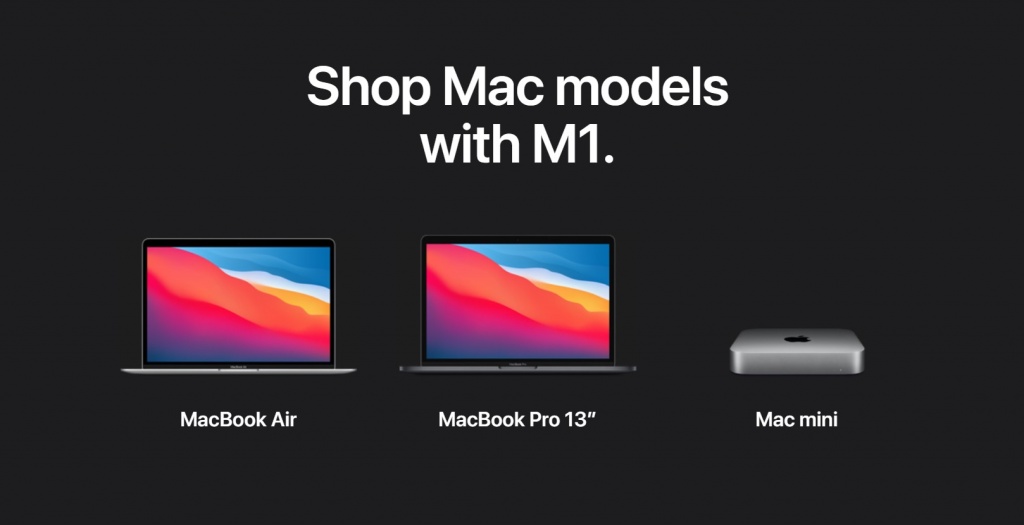
Core Architecture and Design
Up until now, a Mac or MacBook product needed multiple chips to deliver all of its features. Multiple components like CPU, memory, GPU, I/O, and security components needed to be assembled inside the product and linked with each other in order to provide the maximum performance that the product claimed. The Apple M1 chip is a single system-on-a-chip (SoC) that combines a number of major components into a single small package and delivers a high level of integration which is vital for increased efficiency and performance. The M1 chip features a whopping 16 Billion transistors which is the highest number of transistors Apple has ever put into a single chip.
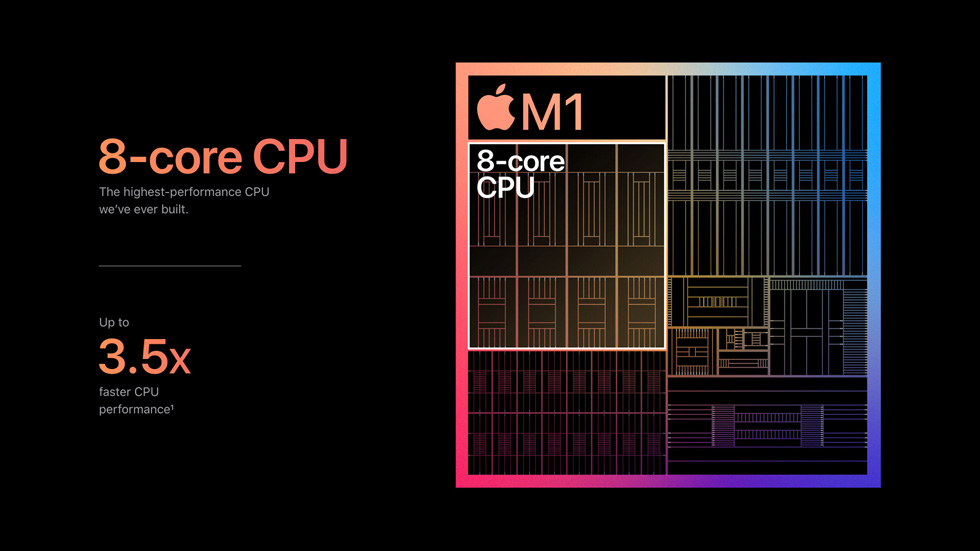
The M1 is at its heart, an 8-core CPU that has been designed to maximize both performance and efficiency. For this reason, it features four high-performance cores and four high-efficiency cores that enable the M1 chip to trade performance for efficiency when needed. Apple claims that its high-performance core is the world’s fastest CPU core when it comes to low-power silicon so multithreaded workloads should be a breeze for these cores. The high-efficiency cores use a tenth of the power of the faster cores while still maintaining a baseline of performance. These cores run lightweight tasks and background applications while the high-power cores handle the most demanding workloads.
In an unsurprising move, Apple has integrated the GPU inside the M1 chip as well which further gives weight to Apple’s claim of the M1 being a complete “System on a Chip”. The integrated GPU of the M1 aims to strike a balance between performance and efficiency which is vital in mobile products like the MacBook. The GPU is also composed of 8 cores and is capable of executing nearly 25,000 threads at a time according to Apple. Apple also claims that this is the most advanced graphics processor that they’ve ever built.
The M1 also features a 16-Core Neural Engine built into the core design on the processor. The Neural Engine is apparently capable of executing a massive 11 trillion operations per second which can be a huge help in machine learning applications and AI. This Neural Engine, combined with the excellent integrated GPU of the M1 makes it an excellent editing and rendering candidate in apps like Final Cut Pro. The new Neural Engine boasts up to 15X faster machine learning performance than previous Mac products.
Apple has also gone ahead and unified the system memory with the rest of the chip components in the M1. The RAM of the Mac Mini or MacBook will now be integrated directly into the chip itself, so it has a direct link to the CPU and other components inside the SoC. The UMA claims to unify the high-bandwidth, low-latency memory into a single pool within a custom package so all of the component s of the SoC can access the same data without copying it between multiple pools of memory. Integrated RAM has a major drawback though as the RAM cannot now be upgraded or swapped by the user.
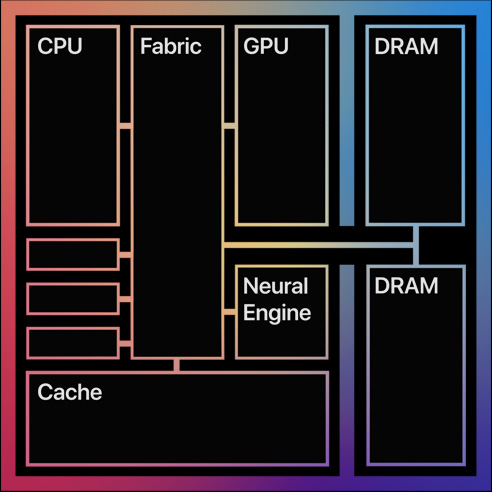
Improvements over x86 Intel Processors
Apple’s decision to transition away from Intel and towards its own ARM-based lineup of CPUs has been mainly dictated by 3 major factors.
Efficiency
Based on the aging 14nm process, the Intel CPUs in the current MacBooks and Mac products are highly inefficient leading to high power draw and thermal throttling issues especially in the laptops. These issues have hampered the potential performance of the MacBook and Mac products and Apple was certainly not happy with Intel’s lack of innovation here.
With the introduction of the M1 Chip, Apple claims a whopping 3x higher performance per watt as compared to the last-gen CPUs. This allows the SoC inside the MacBooks to run cooler and draw much less power as compared to Intel’s x86 based CPUs. The removal of any thermal constraints allows the M1 chip to reach its maximum performance potential even without active cooling as seen in the Mac Mini and the MacBook Air.
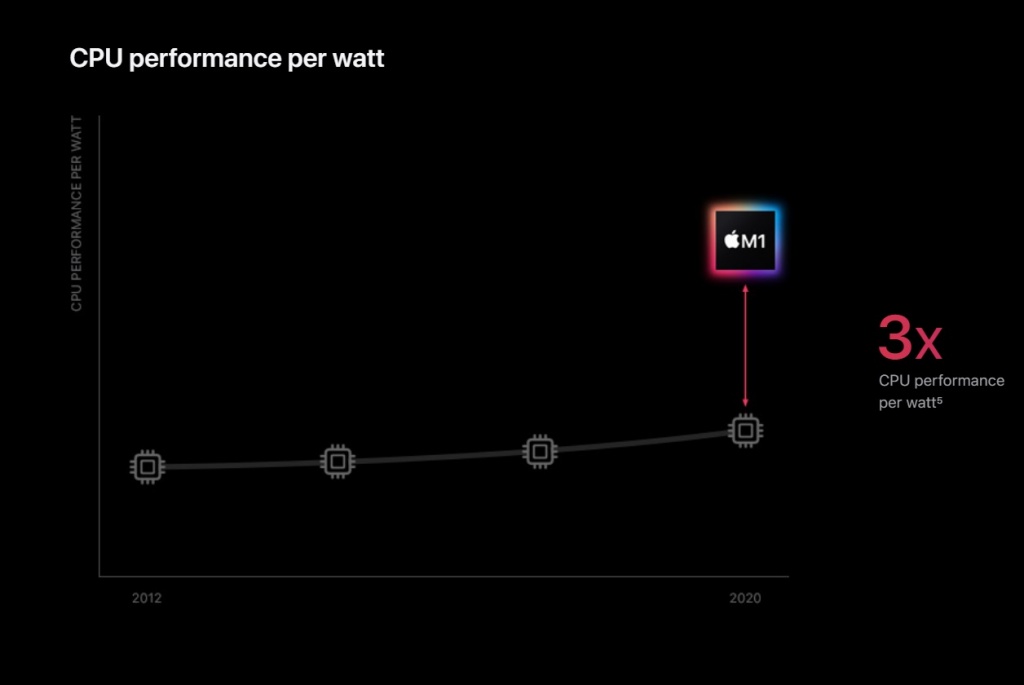
Even more impressive than that is the now massively improved battery life of the new M1 based MacBooks. Apple is claiming up to 17 hours of wireless web browsing and 20 hours of movie playback in the 13” MacBook Pro. These are ridiculous numbers that seem to be accurate as far as initial testing goes. This amazing battery life is a direct result of the improved efficiency of the Apple M1 Chip.
Speed
The M1 Chip is not only a champion when it comes to efficiency, but also in raw performance. The tightly-knit structure of the SoC combined with the design of high-performance and high-efficiency cores provides upto 2x faster CPU performance when compared to the previous generation Intel equivalent. Even more impressive is the fact that it does so using only 25% of the power that the PC chip used in the same scenario. This speaks volumes about the performance and efficiency of the M1 chip not only today but also in the future.
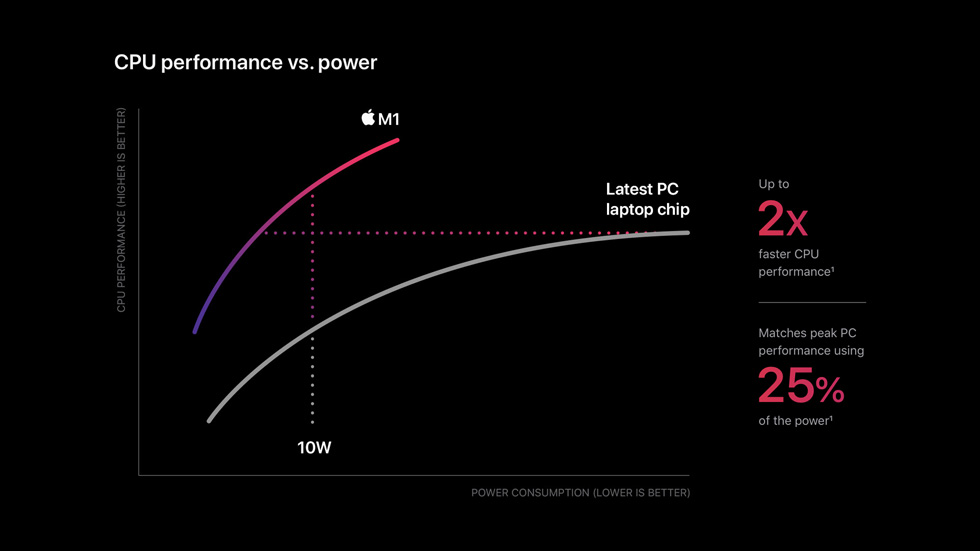
Apple has also claimed that the integrated GPU inside the M1 delivers significantly higher graphics performance than the very latest PC laptop chip for up to 2x the graphics speed. Not only does it beat or match that PC counterpart, but it also does so while only using 33% of the power that the PC chip used in the same scenario. With 2.6 teraflops of throughput, Apple claims that the M1 has the world’s fastest integrated graphics in a personal computer. Efficiency and performance like this, combined with the extensive optimization work that Apple is known for, can make the M1 and future Apple Silicon products extremely hard to compete against for the PC competitors.
According to Apple, as a result of all these improvements the M1 delivers up to 3.5x faster CPU performance, up to 6x faster GPU performance, and up to 15x faster machine learning, all while enabling battery life up to 2x longer than previous-generation Macs.
Optimization
Apple is a company that likes to take control of every facet of the production process when it comes to their own products. Since Apple already has its own operating system, producing custom CPUs and other components tailor-made for that operating system will allow Apple to optimize the experience of the end-user tremendously. Apple can fine-tune the performance of the M1 chip to match the demands and expectations of the operating system and its apps, while the operating system will have a much easier time talking to the M1 chip and its various components. This will allow a much higher level of granularity and control that can lead to a much better experience than was previously possible with Intel CPUs.
In addition to that, the macOS Big Sur is engineered to take full advantage of all the capability and power of the M1 chip as Apple claims that it is their most powerful software ever running on their most advanced hardware yet. M1 and Big Sur not only promise blazing-fast performance and features like Instant Wake but also bring a high level of security to the device by locking everything into the Apple ecosystem.
Taking control of the entire production and development process has enabled Apple to introduce a host of custom technologies in the Apple M1 chip, including:
- Apple’s latest image signal processor (ISP) for higher quality video with better noise reduction, greater dynamic range, and improved auto white balance.
- The latest Secure Enclave for best-in-class security.
- A high-performance storage controller with AES encryption hardware for faster and more secure SSD performance.
- Low-power, highly efficient media encode and decode engines for great performance and extended battery life.
- An Apple-designed Thunderbolt controller with support for USB 4, transfer speeds up to 40Gbps and compatibility with more peripherals than ever.
These custom technologies add to a promising list of custom features that Apple is building into its Apple Silicon processors.

Transition
Apple’s immediate plan after this announcement is to make this transition as smooth and hassle-free as possible both for the developers and the end-users. Keeping this in mind, Apple has chosen the option to keep the Macs based on Intel CPUs still in the market, while also introducing new Macs based on Apple Silicon. This co-existence will prove to be a driving force behind the seamless transition that Apple has planned. By the end of this year, we can expect Macs based on Apple Silicon to hit the market, while the Intel-based Macs will also share the market space for the time being. The full transition will take approximately two years if everything goes according to plan.
Apple has taken appropriate steps in the process of porting over its existing applications to the new ecosystem powered by the new silicon. With macOS Big Sur, Apple has given developers XCode 12, which has built-in tools like native compilers, editors, and debugging tools. Apple claims that using this suite, most developers will be able to port their applications over to Apple Silicon-based Macs in a matter of days. Apple has also launched Universal 2 application binaries which will allow developers to create a single app that will be compatible with both the newer Apple Silicon-based Macs as well as the older Intel-based Macs. With the transitional technology of Rosetta 2, users will be able to use the existing apps which have not been updated. These programs will allow the transition from Intel to Apple’s own CPUs as seamless as possible.
Future
While nobody can say for sure what the future will hold for Apple Silicon products, things certainly seem to be heading in the right direction if the start is anything to go by. Apple has established an extremely strong foothold in the CPU space with the M1 and while it may not be a direct rival to the most powerful desktop CPUs yet, the performance and efficiency it offers right now is unparalleled in current laptop products. This, combined with the extensive optimization that Apple is capable of, makes the M1 a strong choice for potential buyers as of the time of writing.
However, this whole Apple Silicon ecosystem is still in its infancy and going through a transition period. Potential buyers might want to take a step back and analyze the situation a bit before making a decision. Apple’s first attempt at their own custom silicon has brought us exponential improvements in performance, efficiency, and battery life as compared to last-gen Intel counterparts, so it is safe to assume that future iterations of the M1 or other Apple Silicon products might bring even larger jumps, and maybe even at a lesser cost. Not to mention, the whole transition system still needs to be ironed out perfectly as users have reported a few early bugs with various professional and consumer applications. As a professional, you should definitely avoid opting for this new technology at least for the next two years until the whole transition has completed.

Apple is apparently already planning to announce the M1X Chip which is an improved, high-core count version of the Apple M1 for the 16-inch MacBook Pro. More CPUs with higher core counts are expected to be announced later for the Desktop iMacs and Mac Pros, so it is going to get pretty crowded in the lineup pretty quickly. Therefore, it is a good idea to wait out the initial wave of Apple Silicon products and wait for more mature CPU releases later down the line which may perfectly suit your needs.
Final Words
Apple has certainly entered the desktop CPU market in a very strong way, bringing its vast engineering experience from the iPhones over to the ARM-based Apple Silicon products. These CPUs promise to deliver massive improvements over the last generation of Mac products not only in performance but also in efficiency to maximize features such as battery life. Using a completely custom design, Apple seems to have done exactly that with the M1, the first consumer chip released under the Apple Silicon branding.
The M1 is a custom SoC developed and manufactured by Apple which combines the CPU, the GPU, the memory, and the neural engine into one small package in order to simplify communication and decrease latency between the different components. The SoC design based on the 5nm process delivers massive improvements in efficiency and performance due to several contributing factors as compared to its Intel counterparts.
Apple has mapped out a two-year transition period for all of its Mac products to move completely from Intel CPUs to their own Apple Silicon CPUs. While within that period Apple aims to support both the Intel version and the Apple versions of the Macs and MacBooks simultaneously, the extended support and optimization period for the Apple Silicon based Macs is supposed to be longer. Apple has also done an amazing job with app optimization not only for developers but also for general consumers with programs such as Rosetta 2.
Still, it is important to note that the entire transition is still in its early phases. There are still a lot of kinks to iron out in this whole process, and jumping on the first few Apple Silicon based CPUs is simply akin to setting yourself up for “buyer’s remorse”. Therefore, at least for professionals who use their Apple machines for work, it is advisable to wait for more mature Apple CPUs with higher core counts and improved production processes before making the shift. The Apple Silicon program is here to stay and seems to be the way to go for all Apple products as of right now.



